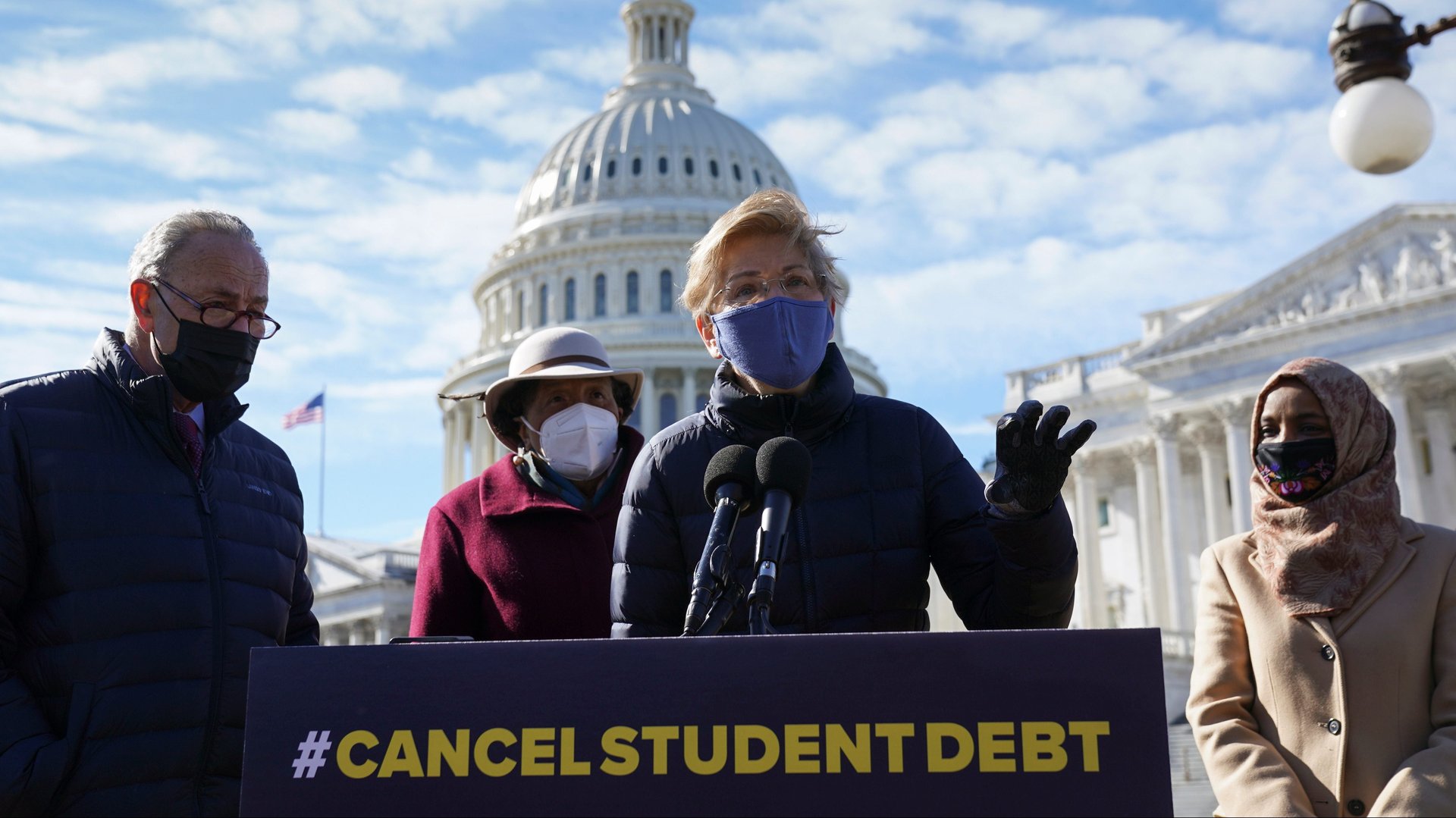The US student loan freeze saved borrowers nearly $200 billion
An estimated $195 billion worth of US student loan payments has been waived since the federal government enacted a freeze in March 2020 in response to the coronavirus pandemic.


An estimated $195 billion worth of US student loan payments has been waived since the federal government enacted a freeze in March 2020 in response to the coronavirus pandemic.
The Federal Reserve Bank of New York released a study today (March 23) that shows some 37 million borrowers have not been required to make payments thanks to this freeze, and they’re likely to struggle with loan repayments once they resume. US president Joe Biden is currently facing pressure from fellow Democrats to extend the pause, which is set to expire in May.
The $195 billion in waived payments is still a drop in the bucket of total student loan debt in the US, which is around $1.6 trillion.
Most borrowers took advantage of student loan freeze
Data analyzed by the NY Fed shows the vast majority of borrowers with direct federal student loans (97%) took advantage of the government policy granting automatic forbearance, with very few making voluntary payments over the last two years.
Those with loans that weren’t covered by the freeze, including private and Federal Family Education Loan (FFEL) borrowers, maintained roughly the same rate of forbearance or deferment—meaning their payments are suspended or reduced—as before the pandemic. Roughly 30% of these borrowers were in forbearance or deferment as of December 2021, compared to nearly all federal borrowers covered by the moratorium.
Direct loan borrowers hold most student debt in the US, totaling $1.3 trillion, while Americans with FFEL loans hold $133 billion and private loan borrowers have $95 billion worth of debt.
The NY Fed is pointing to trends in FFEL loans as an indicator about what will happen to direct federal borrowers once the freeze is over. During the pandemic the share of FFEL borrowers with increasing balances grew by 2%, either because these Americans elected to enter forbearance or missed payments that they had previously been making. This problem may be more acute for direct borrowers when their payments restart, the study said, particularly because this group tends to have higher debt balances and lower credit scores than FFEL borrowers, and to have made less progress toward paying off their student debt.
“We believe that direct borrowers are likely to experience a meaningful rise in delinquencies, both for student loans and for other debt, once forbearance ends,” the authors of the study wrote.
Biden faces pressure to extend moratorium
The president extended the student loan freeze in December and may do so once again before it expires on May 1. Earlier this month the Education Department instructed companies managing federal student loans not to send out notices to borrowers notifying them their payments would start once again, Politico reported.
Some Democrats, including Senate majority leader Chuck Schumer, have urged Biden to cancel student debt altogether, while other have simply asked for another extension on the moratorium while lawmakers work to reform the system.